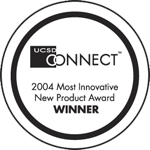BoatingNews
Saturday, January 14, 2006
Life-Safer's Personal Retriever Gets USCG OK
By Jim Kelly
San Diego Bureau Chief
On Dec. 22, 2005 the U.S. Coast Guard approved a new water-safety
device for the first time in over five years.
The last invention to get their nod was inflatable suspenders, a boon
to individual protection for fishermen and merchant marines and this time
the approval could help to save the lives of anyone who might be
drowning.
The newly-approved device is the award-winning Personal Retriever
designed and marketed by Life-Safer, Inc.
Inspired by the memory of a near drowning as a youth, Life-Safer
President Paul Driscoll began his journey toward Coast Guard approval
in 1997 after retiring as a Master Chief from the same organization.
A Life Ring Line Bag Combination
What Driscoll was trying to invent was a combination of a life ring
(has Coast Guard approval) and a line bag (does not have Coast Guard
approval, but most Coast Guard vessels use it).
However, both the line bag (what many rescuers call the
"drowning-acceleration tool") and the life ring have problems. They
only have an effective reach of 40 to 50 feet, and anyone who has ever
been hit by a life ring has surely remembered it.
"If you're in water and need help, you don't want someone throwing
a seven-pound bag of potatoes at your head," Driscoll is fond of
saying.
His concept of a Frisbee on a rope had been tried before with
limited success, but Driscoll's years commanding a Coast Guard cutter
taught him the dangers of throwing heavy objects at drowning men.
"The only device being worked on could have been used to explode
watermelons," Driscoll told BoatingNews in the first interview he has
given since the Personal Retriever was approved.
Driscoll Joined By Friends
So, Driscoll went to work on a device that could be safely thrown
to people in the water. He contacted Ben Dority, an engineer he knew,
who developed a prototype made of foam within two months of beginning
his research.
During these early days when Driscoll was working on his invention,
he was joined in his quest by two friends Larry Nance and former Coast
Guard helicopter pilot Stuart Hartley.
Encouraged by the Personal Retriever's ability to safely deliver a
floatation device over a distance of 100 feet to those who were
imperiled, the threesome approached the Coast Guard for approval.
However, the stamp of approval did not come in 1997. "You can sell
this without our approval," the nabobs of Coast Guard certification
said. But the three inventors knew they would never be able to attract
nationwide and international wholesalers without Coast Guard approval.
The Struggle Begins
Thus began the real struggle for the three friends. From the
beginning, they knew they had something good, and others soon joined
their fight for certification.
Fifty Coast Guard vessels began using the Personal Retriever. Fire
departments around the nation began using them and saving lives.
Even two-time America's Cup winning navigator Peter Isler said,
"The Personal Retriever is an innovative, inexpensive, easy-to-use
device that could be invaluable in many different life-saving
situations."
So, the three friends went back to the Coast Guard with numerous
endorsements. Six times they went back, and each time they were turned
away.
When most people would be discouraged, Driscoll, Lance, and Hartley
dug in, exhausted their savings and continued to improve the device.
They added a light so the device could be seen at night.
Mounting detents were inserted for better throwing ability. A
hydrophilic line was adopted so it would float, shed water, and resist
freezing.
More Support, Then Approval
As the years dragged on, more friends and supporters joined the
band. The Gulf Coast Mariners Association, Trauma Research & Education
Foundation, Watercraft Rescue & Training, Jim Sergerstrom, director of
Swift Water Rescue, and Captain Larry Brudnicki, (the Coast Guard
captain in The Perfect Storm) all asked the question, "Why won't the
Coast Guard approve this life-saving device?"
The scientific community also began to take notice of the Personal
Retriever. In December 2004, UCSD's Connect gave its Most Innovative
New Product Award (MIP) to the Frisbee on a rope. (The MIP has been
given to companies in San Diego who show excellence in technological
innovation.)
Eventually, the weight of enthusiasm for the invention broke down
the fortifications of the Coast Guard. In December 2005 they, too,
finally agreed it was a good idea.
After all the suffering, both financial and emotional, Driscoll and
his two friends remain philosophical. "This struggle wasn't about a
paycheck for us," the old Master Chief said. "We were doing something
to save lives."
For more information on Life Safer's Personal Retriever call (888)
222-0373, (619) 222-3467.

